This garden is SoCal’s hidden treasure. It’s hard to find, but we’ve got directions
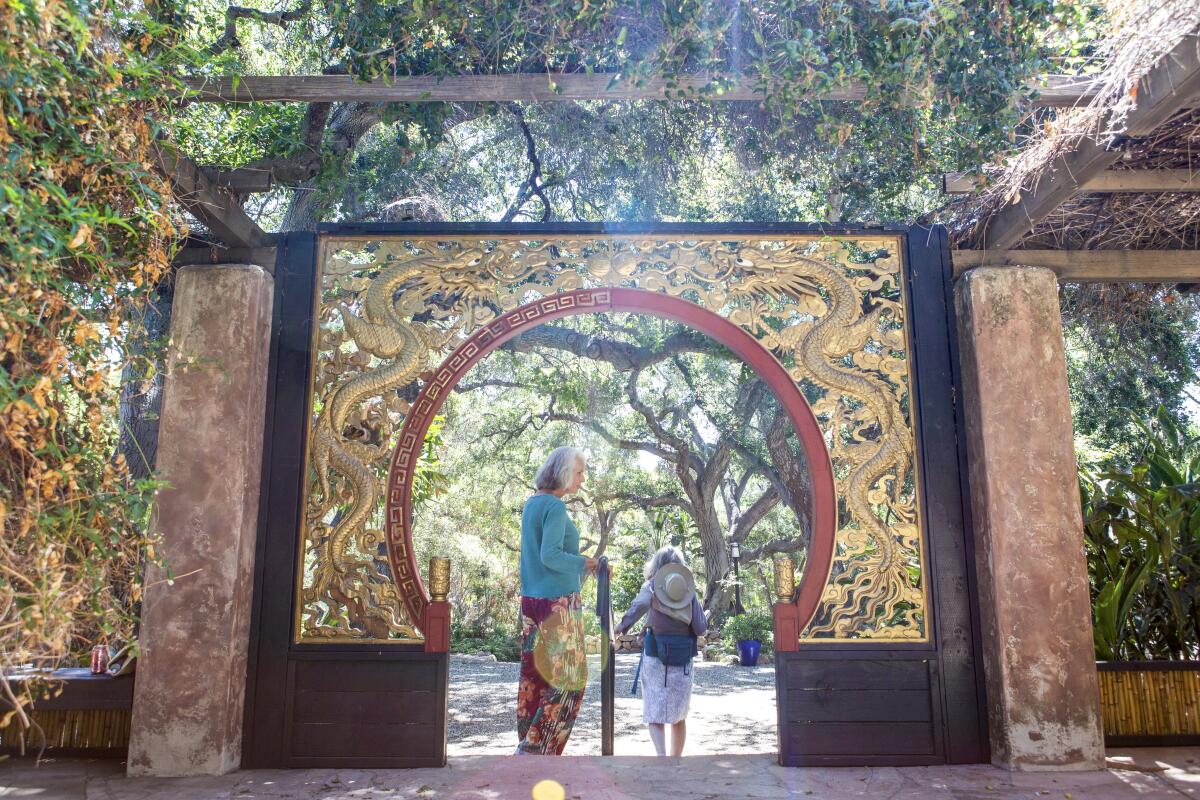
For starters, just getting to Taft Gardens & Nature Preserve is an adventure. The entrance is not listed on Google maps, to discourage drop-in visitors. The only instructions are from an email printout that came with my tickets — the directions vague and confusing enough to make the trip slightly thrilling.
As I’m driving toward the sandstone hills above Lake Casitas, just north of touristy Ojai, I notice the scenery is dusty, flat and relatively boring. I’m beginning to doubt that I found the right road. How can this lead to the beautiful oasis I admired online?
Suddenly, after two heart-stopping, roller-coaster-steep hills, I’m in another world, shaded by towering groves of oak and sycamore. The road narrows and is lined with boulders, a few modest buildings and seemingly abandoned horse trailers. We drive through a small stream bed just a bare trickle this time of year. I follow the blink-and-you’ll-miss-them signs, and suddenly I’m in the parking area, surrounded by spectacular views of boulders, canyons and hills scarred with sandstone slabs.
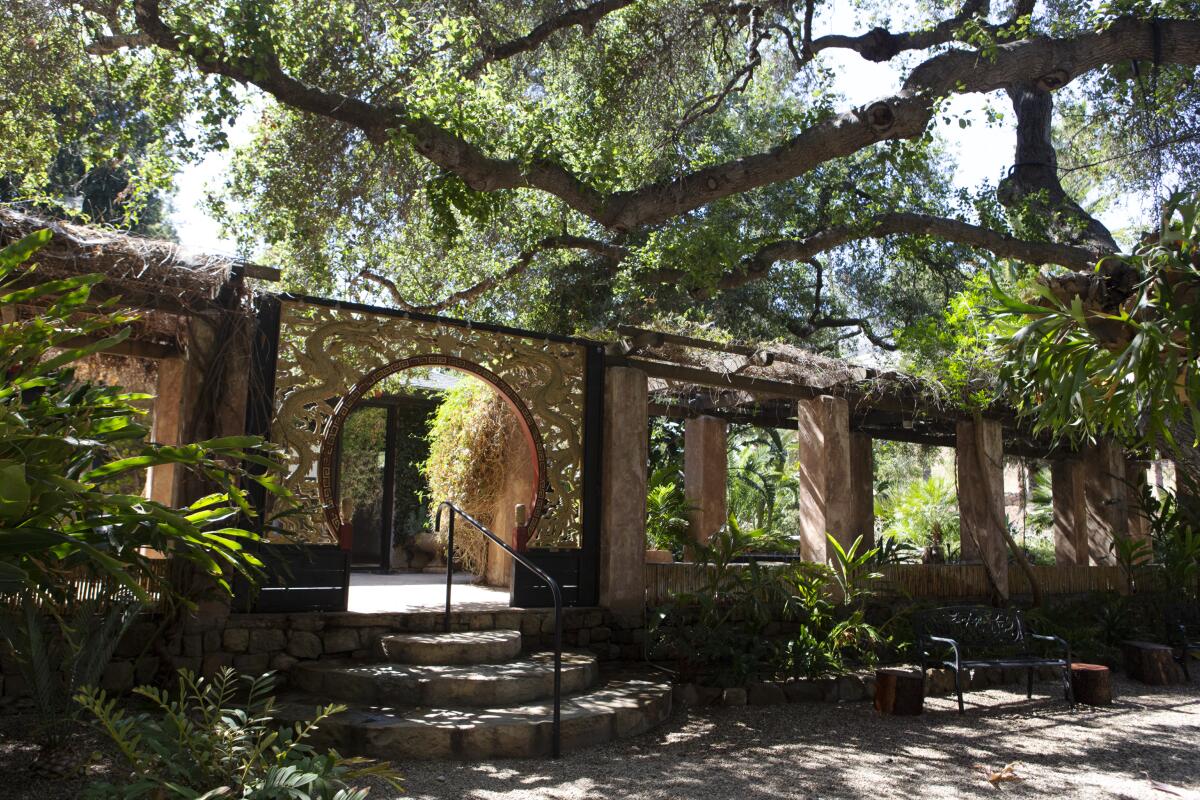
There’s a small, tidy restroom in the parking area, which most will be happy to see after their drive, and a small guest house available for stays. The gardens themselves are just a short walk away. Just past the check-in kiosks is the soft, wide path to explore about 15 acres of otherworldly trees, bulbs, grasses, succulents and shrubs, plus the native oaks and spongy lawns surrounding the special event area popular for smallish weddings.
Never heard of Taft Gardens? Don’t be surprised.
The garden has kept a low profile the last 20 years after neighbors complained about too much traffic on the shared narrow road from fund-raising events, school field trips and other large gatherings. County officials cited seven years of permit violations in 2001 and revoked the garden’s permit.
Later, the nonprofit Conservation Endowment Fund, which owns and operates the gardens, was allowed to reopen with limits on the number of daily visitors, which Taft Garden officials try to keep to about 25 a day. Reservations are required at least a day in advance, and admission is available for only a few hours a day on Tuesdays through Saturdays.
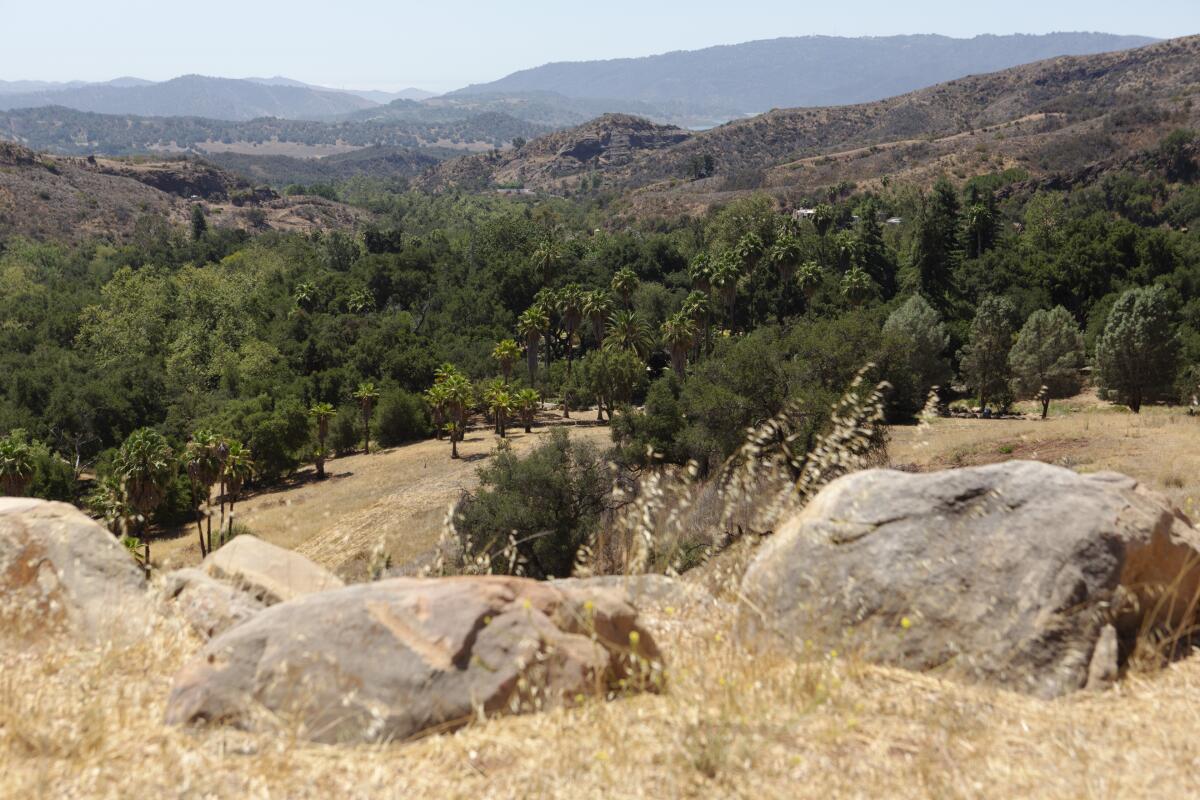
So, yes, it does take some effort to get there, but that, plus a backstory of penance and romance just makes this shady garden of South African, Australian and California native plants all the more special — and a worthy addition to your outings list.)
The most riotous season is spring, when many of the plants are in bloom and dripping with color. Yet Taft Gardens is also a revelation in the heat of summer and fall, when it’s hard to believe there is any green in the dry sandy hills.
This place also houses plants such as the towering Goliath aloes from the Fynbos region of South Africa “that give you a chance to see what succulents look like in the wild,” says our volunteer guide, Cassandra Jones, a visual artist and storyteller who became the garden’s first artist-in-residence this year.
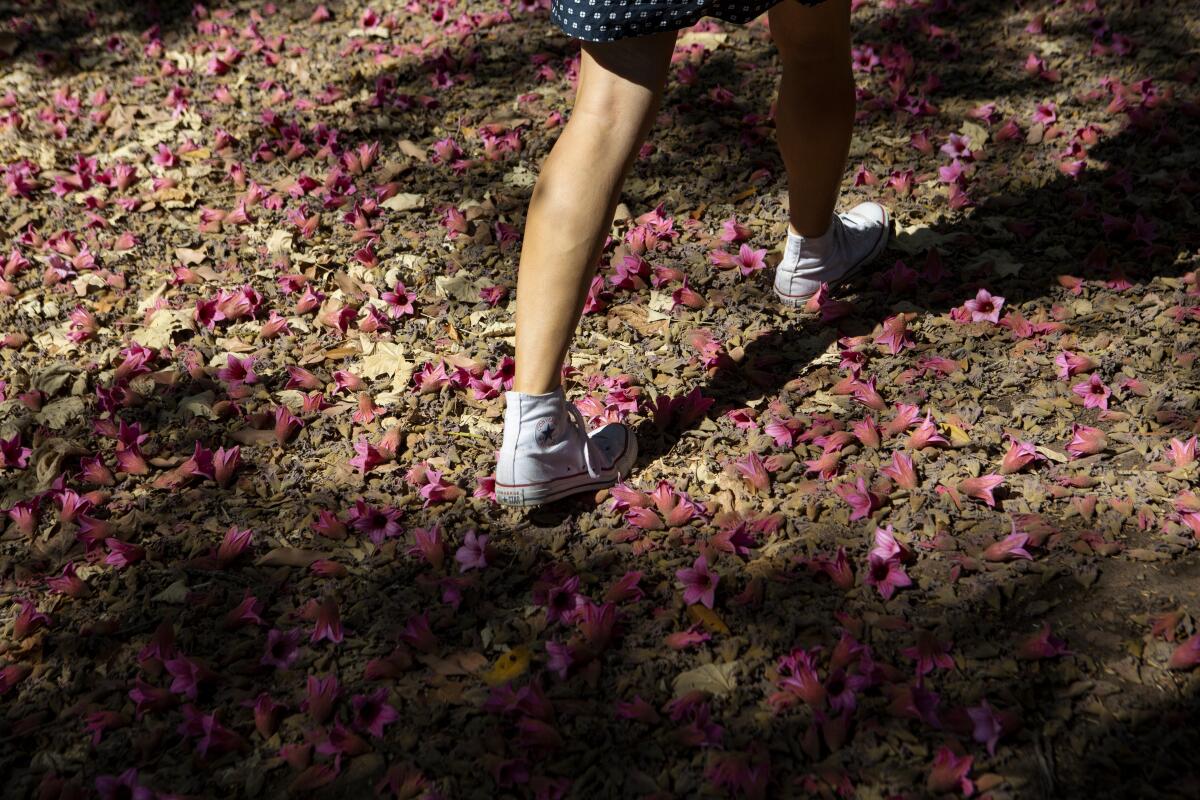
In late summer and fall, the garden is a study in what happens after plants bloom. We’re lucky to come on a day when Jones is giving a tour.
With her artist’s eye, she points out the Australian grass trees — Xanthorrhoea — tall clumps of grass with huge white flower plumes in spring that dry into brown wavy spikes. They look like giant worms frozen in motion. Then there’s the large “Muppet-mouth”-shaped cones of the banksia trees, so thick that they look like a herd of hedgehogs hugging the branches.
Taft Gardens isn’t all seeds and dried grasses, however. During my visit, the pink, deep-throated flowers of the Australian bottle trees are dropping so thickly that it makes the shrubs underneath look as if they’re in bloom too.
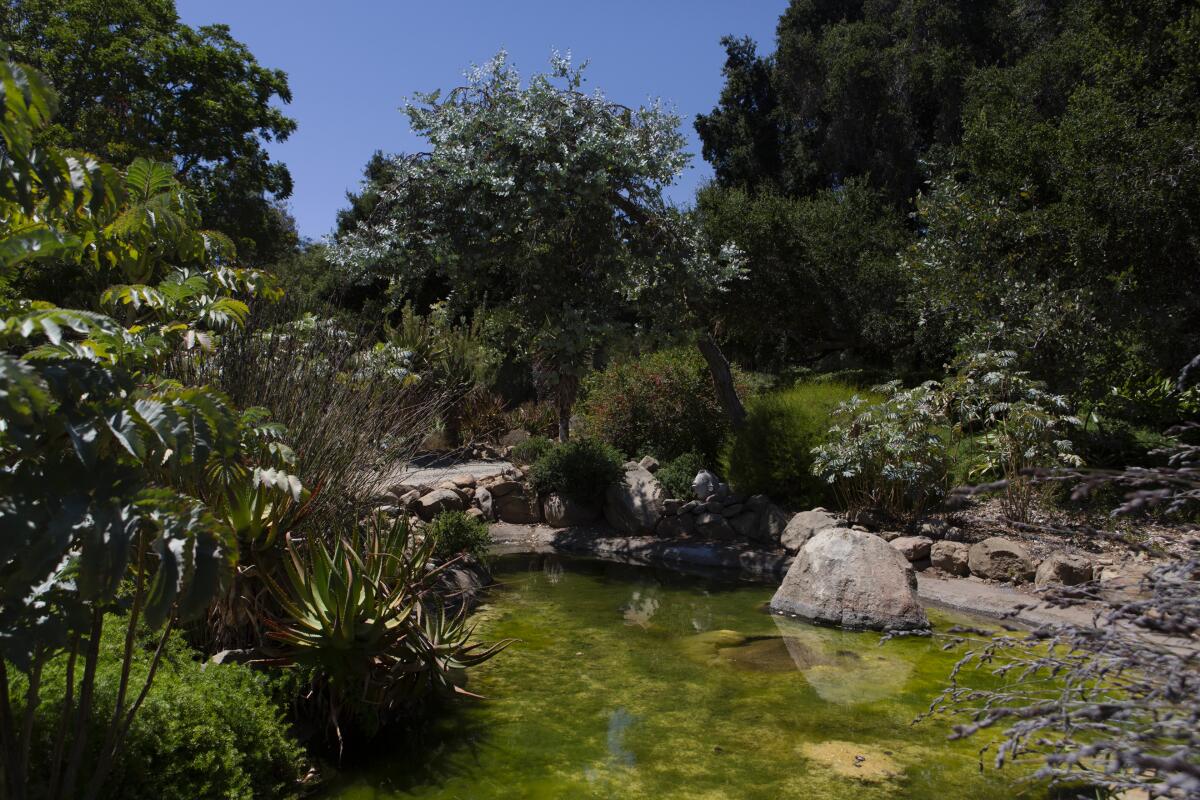
The gardens were planned so something is always blooming, says Laurence Nicklin, the South African landscaper and horticulturist who designed half the space.
Nicklin was working for Cape Town’s famous Kirstenbosch National Botanical Garden when he was hired by Ventura developer and nature lover John Taft in 1988 to create a South African garden on a portion of an undeveloped 400-acre ranch Taft purchased outside Ojai in the late 1970s.
Taft’s family built houses on some of the land, but in 1981, Taft created the Conservation Endowment Fund and gifted 260 of the acres to the nonprofit for a garden and nature preserve.
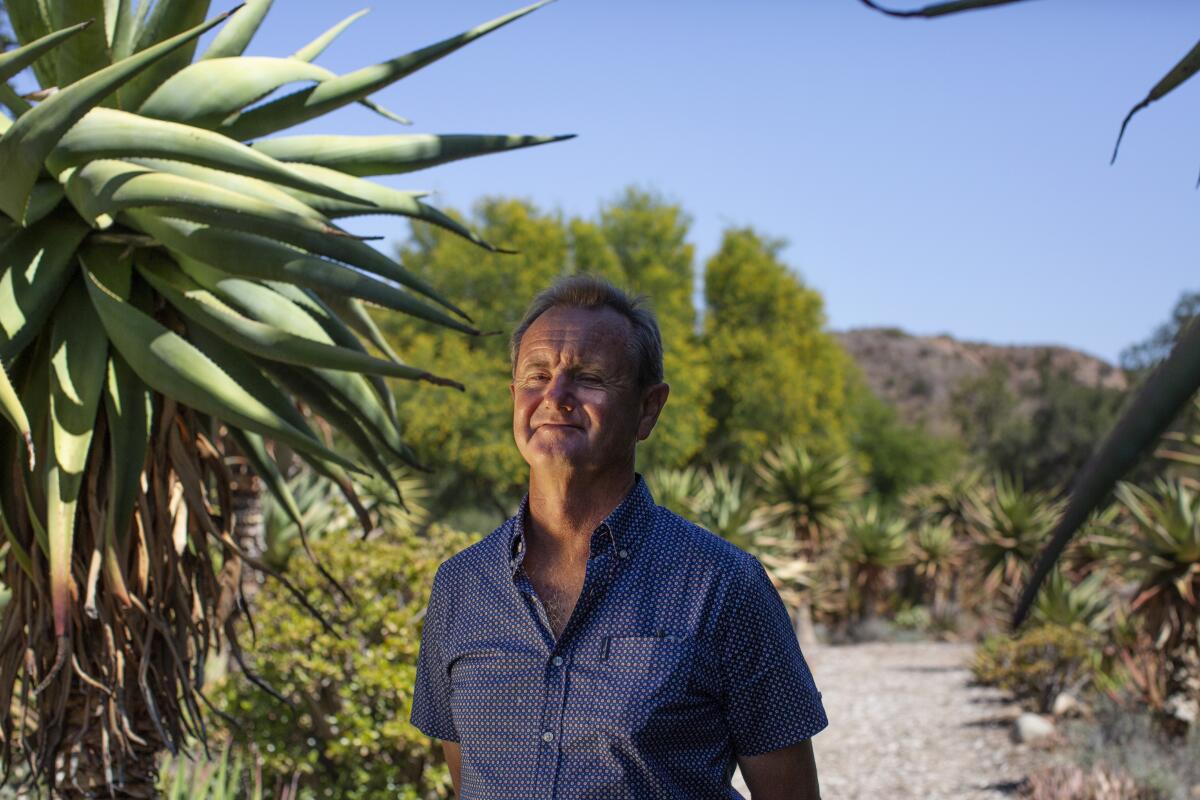
Nicklin was hired for a year, but he almost immediately fell in love with Taft’s daughter, Jenny (“I proposed two weeks after we met,” he says). Before the year was out, they were married. Now, their daughter, Alexandra, an environmental studies graduate of UC Santa Barbara, helps manage the day-to-day operations of the gardens, along with her cousin, Jaide Whitman, who is president and chief executive of the nonprofit Conservation Endowment Fund, which has a seven-member board.
Taft also went authentic with Australian plantings; in 1989, he recruited horticulturist Jo O’Connell of the Taronga Zoo in Sydney to create a “bird-attracting garden.”
O’Connell found love Stateside as well, eventually marrying and settling in Casitas Springs near Ojai, where she runs her home-based nursery, Australian Native Plants.
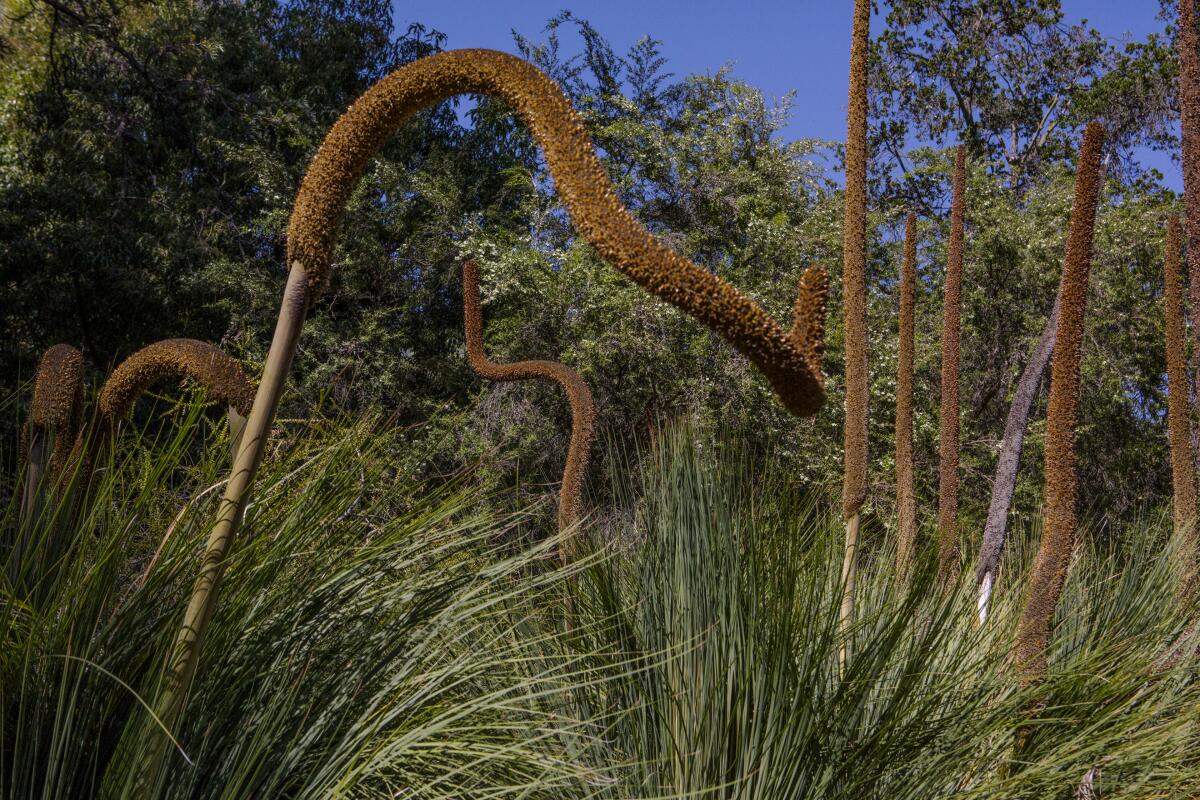
And Taft? He’s now 87 and “suffering terribly from TMB,” he says gruffly during a telephone interview. “It’s a terrible affliction, affecting every part of my body.
“T-M-B,” he repeats impatiently, then laughs. “Too many birthdays.”
Taft was born and raised in Ventura, and from an early age, he says he loved flowers, birds and roaming the county’s wild hills. He was less enamored with his father’s business, Taft Electric Co., which started in 1948, selling appliances and doing electrical work.
Taft’s dad, John Sr., put him in charge of the appliance department when he was 16 — a job he says he hated — but it gave him money to pursue his two real interests: making movies about the natural world and “buying little rental houses around Ventura, which were pretty cheap in those days.”
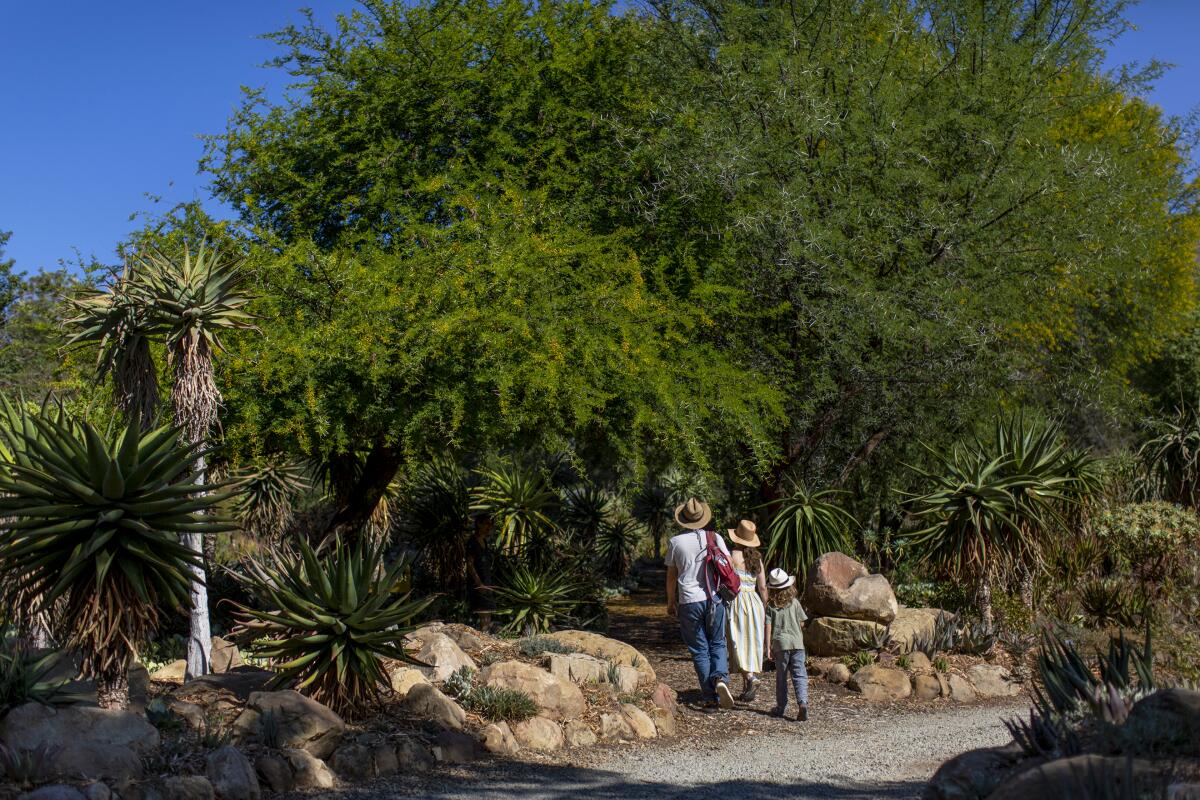
He left the family business as soon as he could in the mid-1960s, traveling the world to make nature documentaries that he showed on the Audubon Society club circuit. In the mid-1970s, he and his business partner, Bud Hartman, had a chance to purchase about 170 acres of farmland near the center of Ventura, which Taft went on to develop into shopping centers and industrial parks.
He had already bought a ranch near Red Rock Lakes National Wildlife Refuge in southwestern Montana in 1971 and later a nearby Montana ghost town named Lakeview, which he, his wife, Melody, and longtime friend Bill Nicholson rebuilt and donated to the University of Utah environmental studies program. It’s now known as the Taft-Nicholson Center.
He says he bought the acreage that includes Taft Gardens expressly to prevent any development in the hills he explored and loved as a boy.
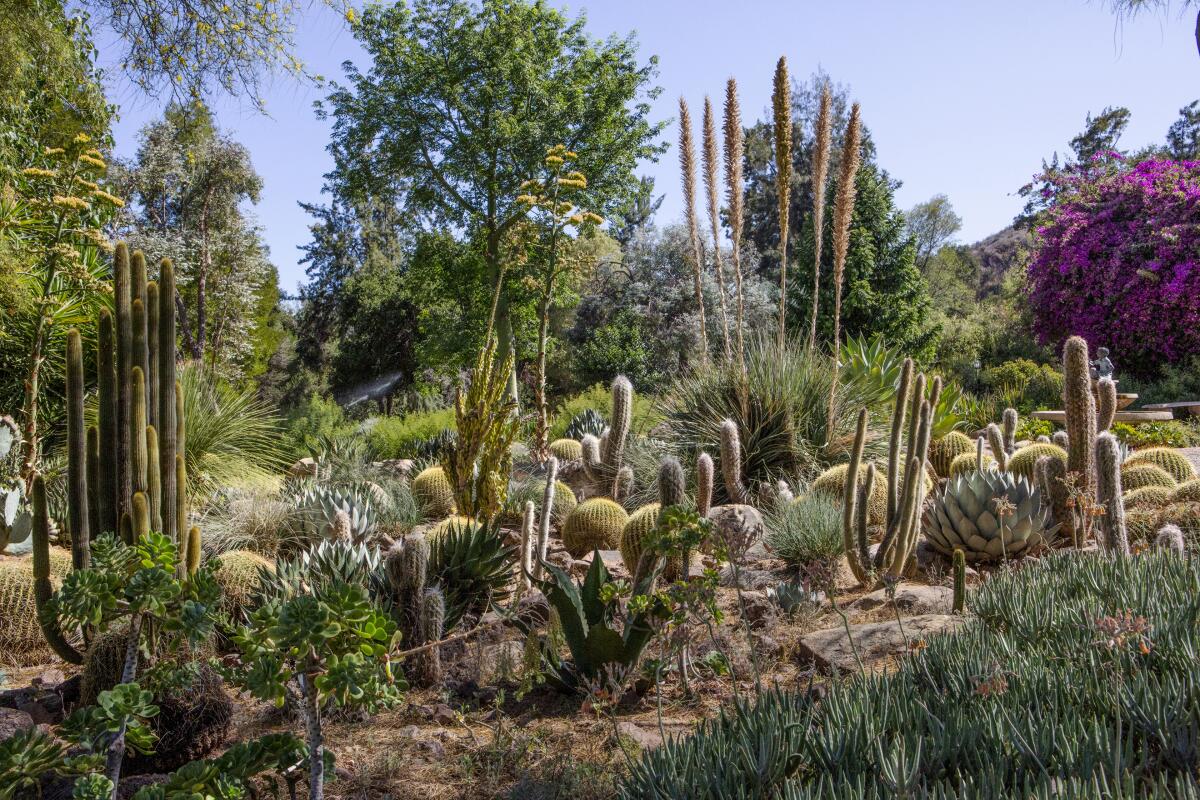
Taft acknowledged the irony, having made millions off his developments in Ventura. “But I’ve given all of it back to various organizations and created the gardens and the education center for the University of Utah,” he says.
“People accused me of taking beautiful farm land [in Ventura] and destroying it, but it was in the middle of town. If I hadn’t, somebody else would have done what I did. ... It was a rare opportunity, but I’ve given it all back with the [Taft] Gardens. And I’m responsible for saving 30,000 to 50,000 acres in Montana, keeping it for animals and beauty and not being covered up with little ticky-tacky ‘ranchettes.’ Between that and my gardens, I feel content I’m leaving something behind that others can enjoy in the future.”
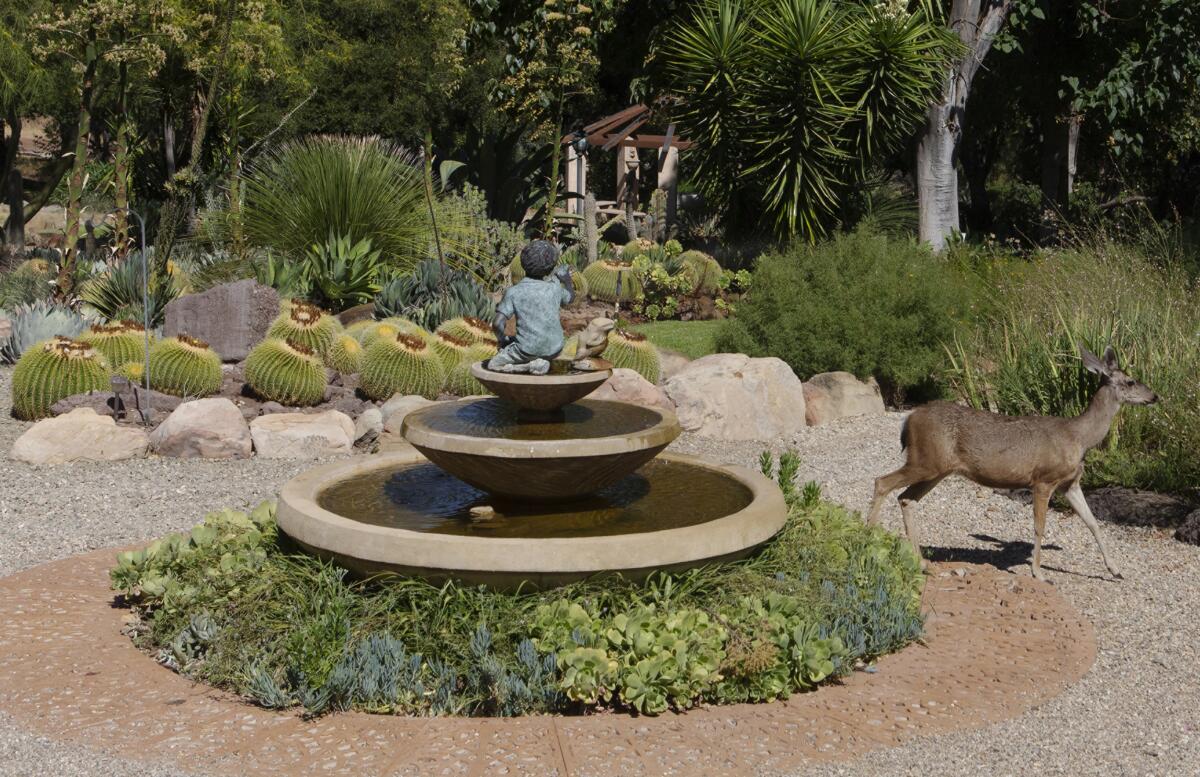
Taft isn’t involved in the official operation of the gardens anymore. He resigned from the board in 2001. But when he’s not summering on his ranch in Montana, he’s still a regular fixture at the garden, leaving seeds for the birds along the rocky paths or offering opinions on how certain plantings can be improved.
His suggestions sometimes exasperate the garden designers, who have their own vision of where things should be. Nevertheless, Whitman says Taft remains the organization’s lifeblood.
“We’re glad he’s back [from Montana],” she says. “The garden has much more life and purpose when he’s around. He’s always keeping us on our toes and surprising us, but it’s the joy of all of our lives, having the whole family work together on this. It’s been very sweet.”
There is something sweetly innocent about these gardens. Traffic noise is nonexistent, and the paths are alive with birdsong and the sudden scurry of lizards. The paths are quiet enough that it’s easy to be noiseless. Late in the afternoon, a photographer wandering the grounds manages to surprise a deer drinking at a fountain.
And like all secret gardens, this is a space that invites you to play. A child in our small tour group entertains himself by gathering handfuls of the fallen bottle tree blossoms along the path, arranging them on rocks so they look like pink googly eyes peeping over the side. Then he gently places them on the ends of aloe branches, like little hats on octopus arms.
I have to stop myself from joining in — that’s his gig, after all — but it’s just another way this little garden inspires and makes me very, very happy.
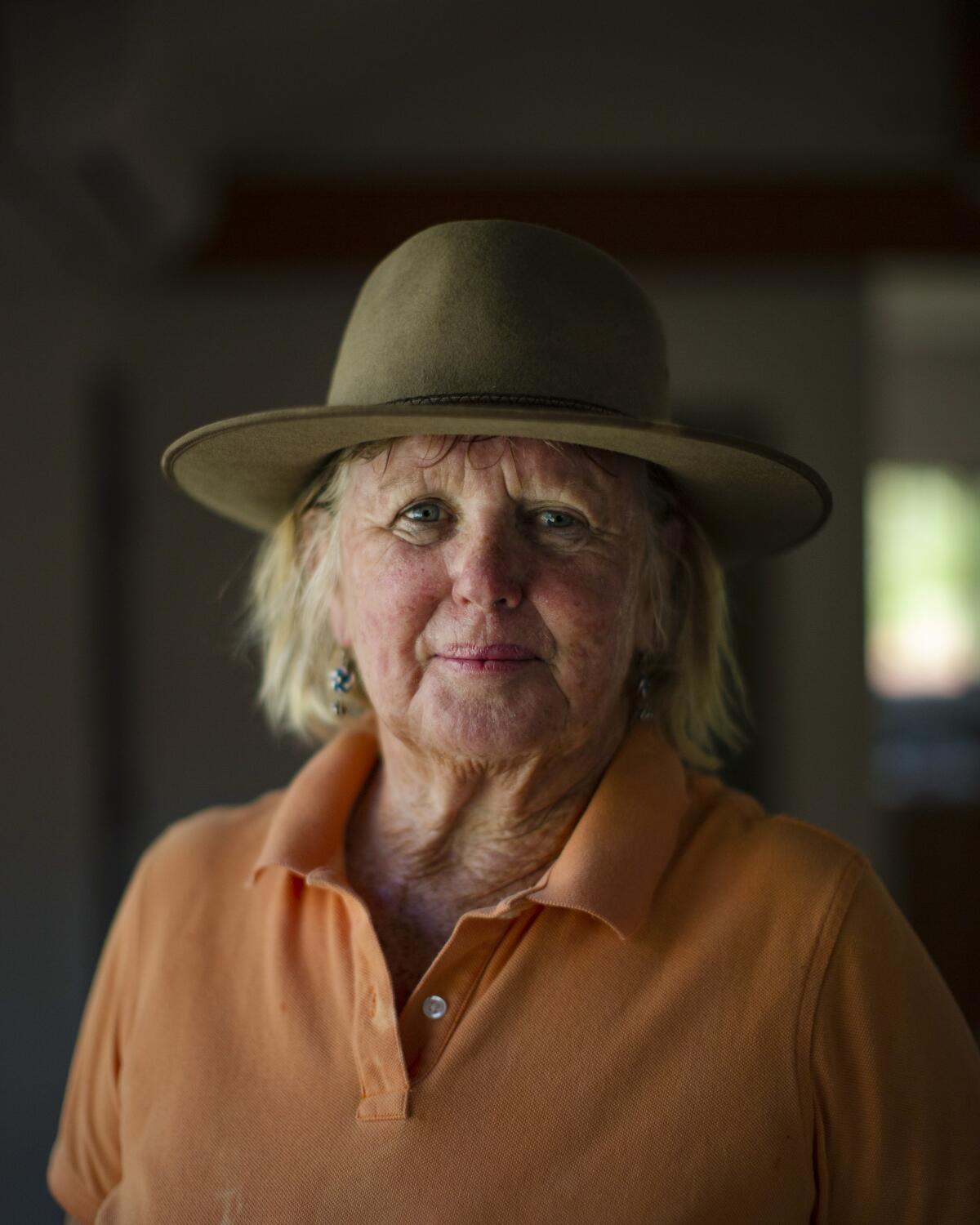
If you go
- Tickets are $20 and must be purchased online at least 24 hours in advance at taftgardens.org.
- The process is a bit involved: First you purchase a ticket, then get a confirmation link to the waiver-of-liability form, which must be signed by all visitors. You won’t get directions to the gardens until the form is signed.
- Taft Gardens is usually open Tuesdays through Saturdays, with two-hour “regularly scheduled visitation events” — times that change with the seasons and temperature. Presently, tickets are available for time slots between noon and 5 p.m. Tuesdays and Thursdays, 9 a.m. and 3 p.m. Wednesdays and Fridays and 9 to 11 a.m. on Saturdays.
- There’s no food sold at the gardens, but water is available near the restrooms in the amphitheater area. Jaide Whitman, president and chief executive of the nonprofit Conservation Endowment Fund, which operates the gardens, suggests a pack-in-and-pack-out picnic, as there are several lovely spots to sit and eat. (We picked up some superb sandwiches from Marché Gourmet Delicatessen in Ojai before our visit.)
- Wear sturdy walking shoes. The paths are uneven and rocky in places, but there aren’t any serious hills. If you wander all the paths, Laurence Nicklin, the South African landscaper and horticulturist who designed half the space, estimates you’ll walk about three miles.
- Check the website for monthly special guided events such as natural history walks or walking mediations. Those ticket prices vary from about $35 to $45 per person.
More to Read
Sign up for The Wild
We’ll help you find the best places to hike, bike and run, as well as the perfect silent spots for meditation and yoga.
You may occasionally receive promotional content from the Los Angeles Times.











